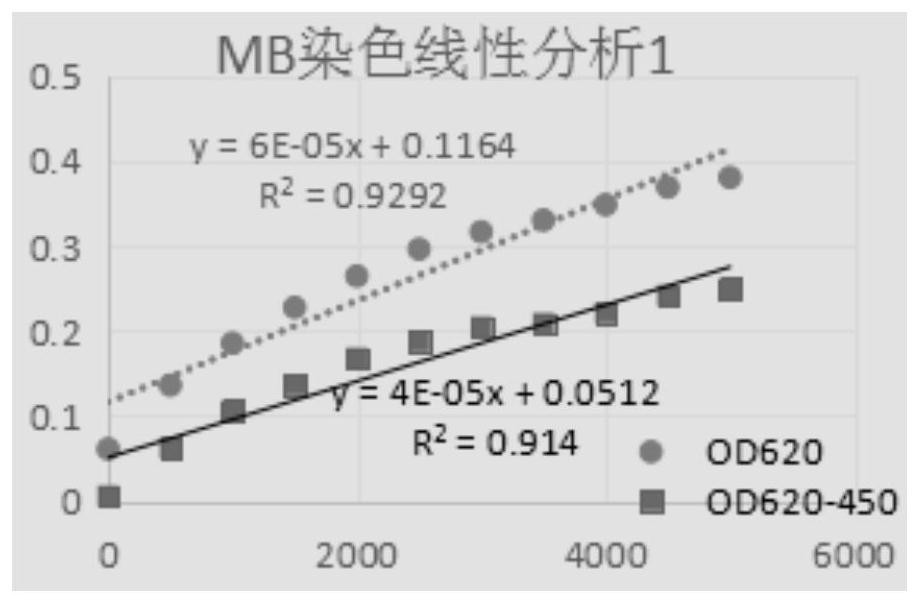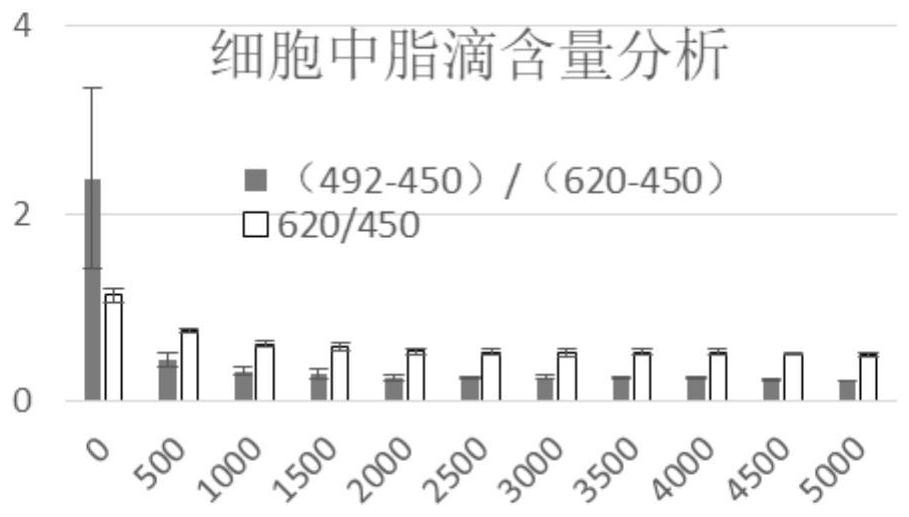High-throughput screening method of hepatic stellate cell activation inhibitor and application thereof
A hepatic stellate cell and screening method technology, which is applied in the field of high-throughput screening of hepatic stellate cell activation inhibitors, can solve the problems of small Stokes shift, difficult high-throughput screening method, cumbersome process, etc. easily measurable effect
- Summary
- Abstract
- Description
- Claims
- Application Information
AI Technical Summary
Problems solved by technology
Method used
Image
Examples
Embodiment 1
[0047] A high-throughput screening method for hepatic stellate cell activation inhibitors, comprising the following steps:
[0048] Step 1: Using a combination of sodium oleate, vitamin A, and insulin to restore hepatic stellate cells to a resting state;
[0049] Step 2: Use fetal bovine serum, TGF-β1, PDGFBB / AA, lipopolysaccharide (LPS) or any combination thereof to induce reactivation of hepatic stellate cells; at the same time, add compounds to be screened to observe the inhibitory effect of a certain molecule on the induction and activation conditions ;
[0050] Step 3: Stain the hepatic stellate cells with a dye, read the fluorescence or light absorbance with a microplate reader for quantitative analysis; screen the drug to be tested, select the candidate active drug according to the activity, and confirm the drug by Western blot or RT-PCR method effect. The specific method steps are as follows:
[0051] Oil red O-methylene blue double staining method (ORO-MB method) i...
Embodiment 2
[0055] Using Bodipy / -Hoechst33342 double-stained fluorescence method (B-H method) for lipid titer in cells:
[0056] In the previous example, 4% neutral paraformaldehyde was fixed at 4 degrees Celsius for 12 hours, discarded the fixative and dried it completely, washed twice with PBS, and 50 μl of fluorescent staining solution (1 μg / ml Bodipy493 / 503 in PBS, B and 0.5 μg / ml ml Hoechst33342, H) 37°C for 20 minutes in the dark, discard the dye solution, wash 3 times with PBS, read H-350 / 461nm and B-493 / 503nM on a microplate reader, and calculate the B / H fluorescence intensity.
[0057] Considering that there are fluorescent chromophores in the structure of some compounds, autofluorescence around 490-510nm will affect the screening and cause false positives, so Bodipy with other emission wavelengths, that is, more than two BODIPY series compounds with different excitation / emission wavelengths, are used as probes. Needle, multi-channel fluorescent screening to avoid false positives...
Embodiment 3
[0060] Lipid titer detection and verification of known drugs that inhibit HSC activation:
[0061]Some small molecule drugs that can inhibit the activation of hepatic stellate cells in the literature include rosiglitazone (CAS 122320-73-4), rutin (Rutin, CAS 153-18-4), chloroquine (Chloroquine, CQ, CAS 54-05-7), curcumin (Curcumin, CAS 458-37-7) and L-732138 (CAS 148451-96-1) were used as positive drugs, which were detected by the aforementioned ORO-MB staining and quantitative methods The inhibitory effect of positive drugs on the activation of LX-2 cells induced by TGF-β1, LPS, PDGFAA / BB and FBS is manifested as an increase in the amount of lipid droplets, and the corresponding EC50 measured is shown in Figure 4-Figure 9.
PUM
 Login to View More
Login to View More Abstract
Description
Claims
Application Information
 Login to View More
Login to View More - R&D
- Intellectual Property
- Life Sciences
- Materials
- Tech Scout
- Unparalleled Data Quality
- Higher Quality Content
- 60% Fewer Hallucinations
Browse by: Latest US Patents, China's latest patents, Technical Efficacy Thesaurus, Application Domain, Technology Topic, Popular Technical Reports.
© 2025 PatSnap. All rights reserved.Legal|Privacy policy|Modern Slavery Act Transparency Statement|Sitemap|About US| Contact US: help@patsnap.com



